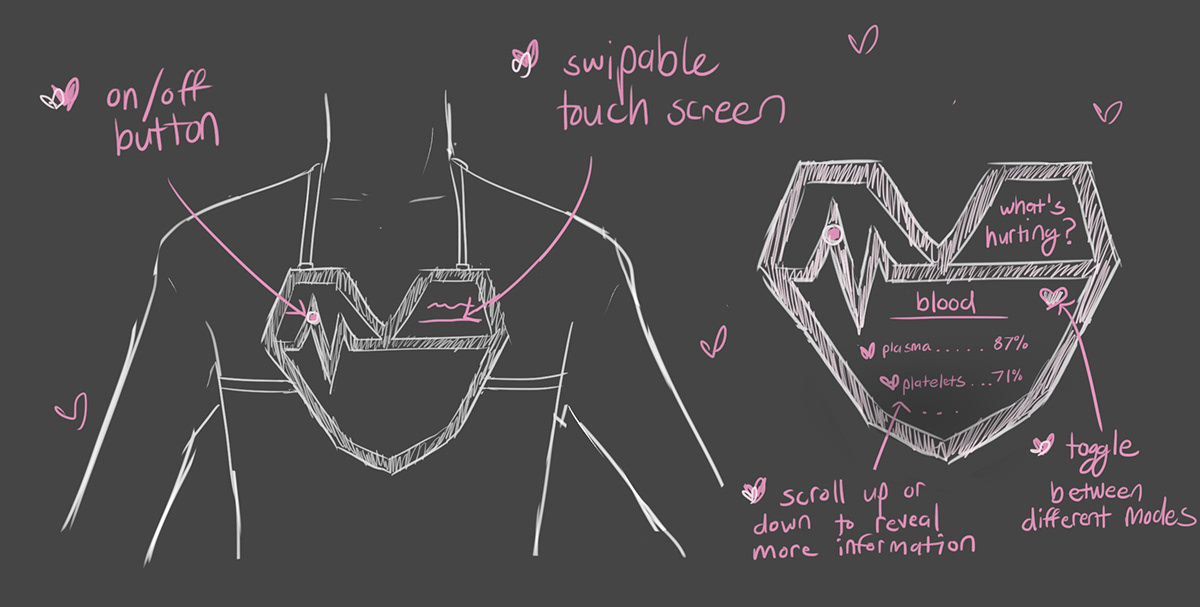human centered design
hurt monitor








The hurt monitor is an electronic device that can detect how much a physical part of the body is lacking compared to its possible potential, or "hurting." With it being physically attached to the subject's chest, it performs an in-depth can on the body. Whether a bicep muscle has been torn, or serotonin levels are unusually low, it will rate this in terms of percentages, with a score in the high 90's being optimal. There are a variety of modes with the hurt monitor, each examining a specific aspect of the body. One can look at the respiratory system, the face, or simply the right pinky toe. The hurt monitor immediately groups any relevant information on the chosen topic. Or, a general list of "what's hurting" is available as well. This includes physical damage and "mental" (brain activity) damage. A second individual is preferred to control the device and read the information on the screen. This individual can put the device on the subject, or the subject can put it on themselves. It can be used in instances of emergencies, to easily detect internal wounds; when the subject is ill, to ascertain the cause and experienced symptoms; in mental health environments to observe the level of chemicals in the brain; and anything in-between. In some cases, it can determine the cause of death if used during or quickly after death. The hurt monitor is often used in controlled, doctor-patient settings, but it may be used in more casual contexts as well.
The monitor's color palette is black, white, and pink. The heartbeat detail and outline is white, as well as the back piece, and the pink is an accent color, featured on the power button and the text on the screen. The simple colors make it sleek, somewhat reminiscent of other medical instruments, but the pink accent adds a bit of dimension into the mix. The heart shape hints at where the device should be placed (over the chest), and in combination with the heartbeat line, it implies a medical purpose. The materials are glass, metal, and fabric. The glass is for the screen, the metal for most of the device's composition and strap books, and the fabric is for the straps themselves. Since it is a touchscreen, the glass is smooth, similar to a typical smartphone's screen, and being just as simple to use. It emits a low amount of blue light, and with the displayed graphics being pleasing, the visual experience is easy on the eye. The metal is durable, and it stays at a pleasantly warm temperature in order to not make the subject uncomfortable. When not in use, the hurt monitor is at a normal but colder temperature. The strap hooks are reliable, securely attaching to the hooks at the sides of the heart. The thin straps are stretchy and adjustable for any size, so that it remains snug and comfortable. Any point where the strap connects to the heart is removable, so the users may put it on in any way they find to be most convenient. When it is turned on, the hurt monitor plays a quick jingle and vibrates, so that the user and the subject know it is awake. Additionally, it makes a click noise and softly but quickly vibrates when switching between its modes, again to inform the users that a change has been made. Powering it off provides the same reaction.
research sketches


